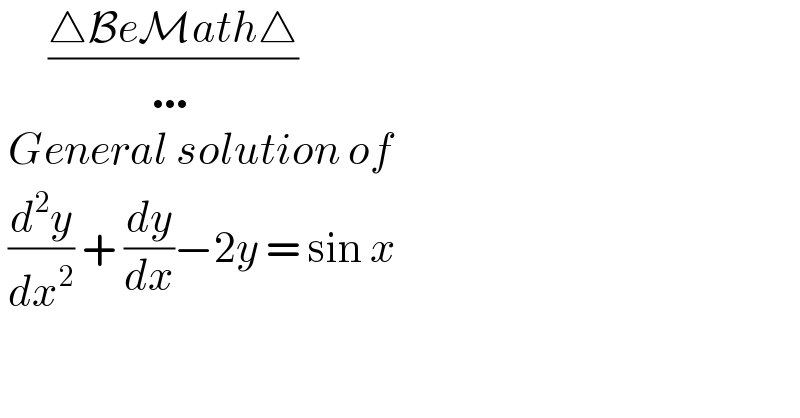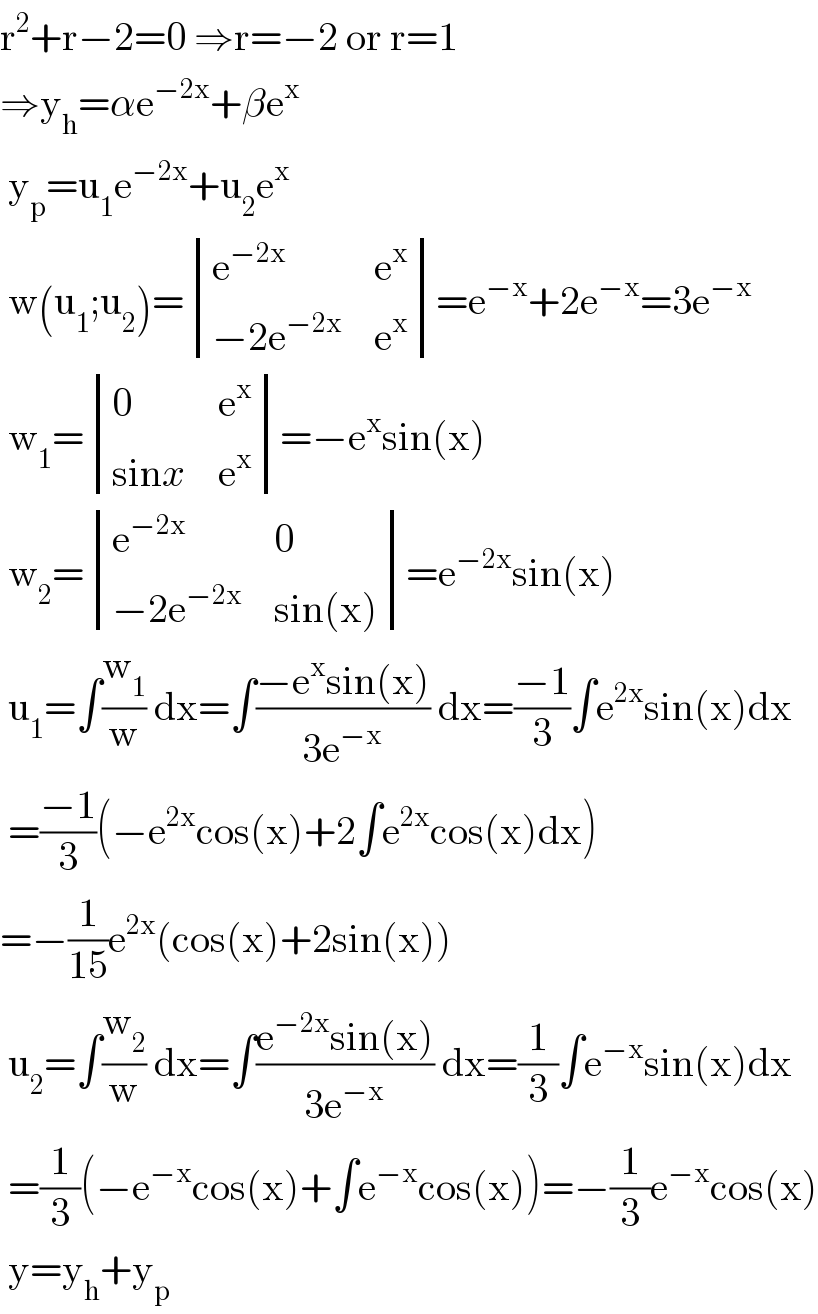
Question and Answers Forum
Previous in Differential Equation Next in Differential Equation
Question Number 108353 by bemath last updated on 16/Aug/20

Commented by bemath last updated on 16/Aug/20

Answered by Aziztisffola last updated on 16/Aug/20

| ||
Question and Answers Forum | ||
Previous in Differential Equation Next in Differential Equation | ||
Question Number 108353 by bemath last updated on 16/Aug/20 | ||
 | ||
Commented by bemath last updated on 16/Aug/20 | ||
 | ||
Answered by Aziztisffola last updated on 16/Aug/20 | ||
 | ||
| ||